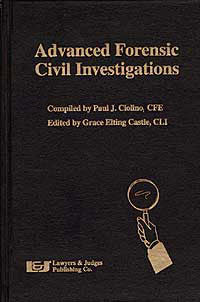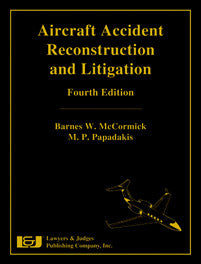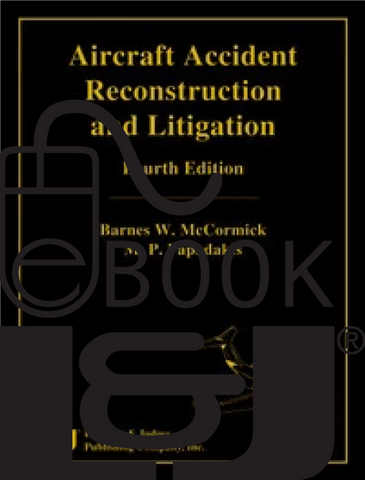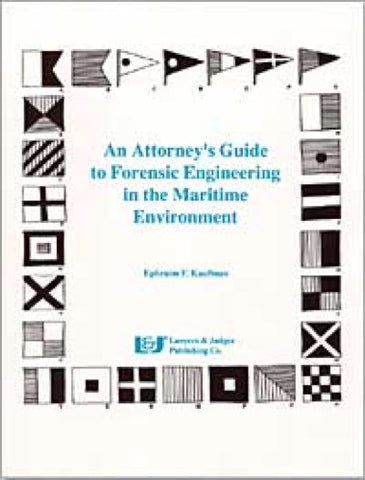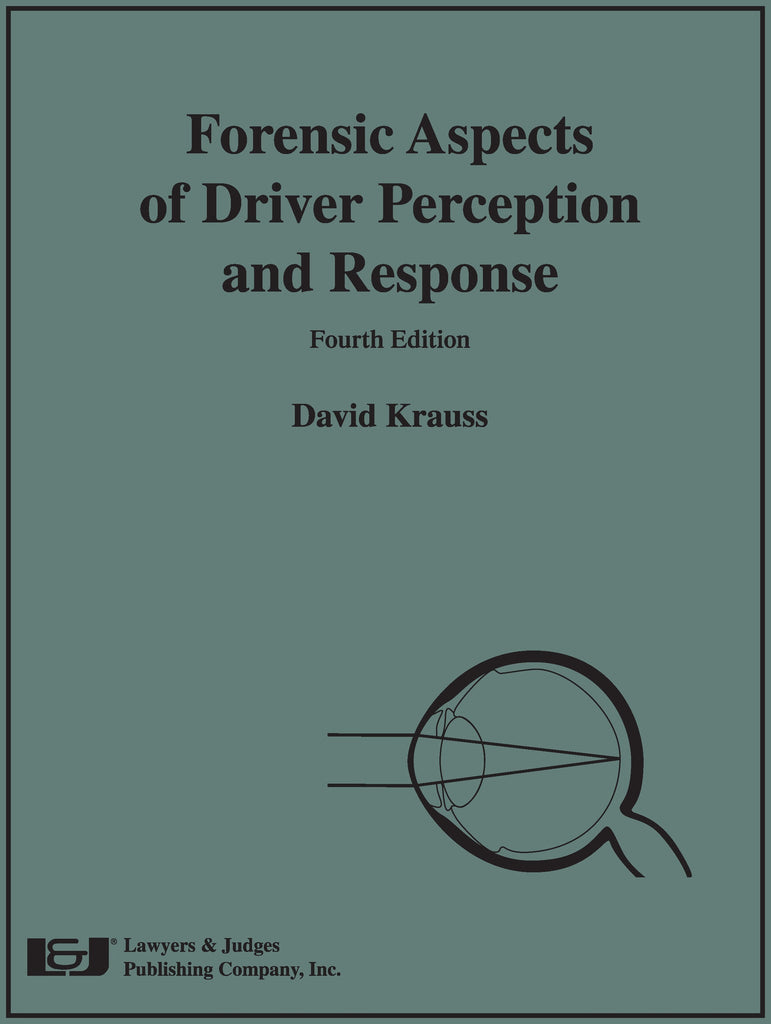
Forensic Aspects of Driver Perception and Response, Fourth Edition Book
- Author: David Krauss
- ISBN 10: 1-936360-33-0
- ISBN 13: 978-1-936360-33-8
- Copyright Date Ed: June 26, 2015
- Pages: 336
-
Binding Information: Hard Cover
- Size: 8.5 X 11 Inches (US)
This brand new fourth edition of Forensic Aspects of Driver Perception and Response contains invaluable new information you need to know about driver perception and response and related human factors and design issues.
This text contains the most current information available in the area of driver perception and perception-response time. Updated from the classic third edition by Paul Olson, all existing chapters have been expanded, providing in-depth coverage of areas such as light reflecting surfaces, visibility enhancing materials, driver age, gender and experience, fatigue, reaction time, speed perception and vehicle size, vehicle lighting and marking, glare, roadway design and the driver, work zones, railroad grade crossings, roadway signage, weather and driving and driver distraction. Additionally, a new chapter has been added covering the proliferation of in-vehicle technology and its relationship to the driver.
If you work with driver perception and response cases in any capacity, this book is an invaluable addition to your reference library.
What's New In This Edition?
- New 8.5 x 11 format
- Every chapter is updated with new conceptual information as well as case studies
- Further emphasis on fundamentals of visual and cognitive processing
- Many new figures
- Added emphasis throughout the book on how technology contributes to the field both from the driver standpoint as well as the forensic side of things (i.e., how to use technology to perform human factors accident analyses)
- New chapter on in-vehicle technology
- Contributions from 5 new authors, including Krauss
- Each chapter includes a header indicating the contributing authors for those chapters
- Incorporates the input and experience from several forensic human factors professionals as well as traffic engineers
Topics Include
- Driver Perception
- Light and Its Measurement
- Vision, Audition, Vibration and The Processing of Information
- Driver Eye Movements and Visual Attention
- Conspicuity
- Judgments of Speed and Distance
- The Driver’s Field of View
- Driving at Night
- Vehicle Lighting Systems
- Lighting Sources Other Than Vehicle Headlamps
- Evaluation of Visibility in the Field
- Visual Demonstratives
- Roadway Design
- Work Zones
- Railroad Grade Crossings
- Roadway Signage
- Driver Perception-Response Time
- Weather and Driving
- The Older Driver
- Driver Distraction
- In-Vehicle Technology
Table of Contents
Preface
Part I: Factors Affecting Driver Perception
Chapter 1: Introduction
David Krauss and Paul Olson
1.1 Purpose and Scope
1.2 Human Factors in Accident Reconstruction
A. What is Human Factors?
B. Introduction to Human Factors and Motor Vehicles
C. History
D. Human Factors in Product Evaluation and Development
E. Applicability of Human Factors to Accident Reconstruction
F. What isn’t Human Factors
1.3 Human Variability
A. The Problem
B. Descriptive Statistics
C. Correlation
D. Inferential Statistics
E. The Concept of Threshold
1.4 Expectancy
A. What It Is
B. Driver Expectancy
1.5 Chapter Overview
References
Chapter 2: Light and Its Measurement
David Krauss and Paul Olson
2.1 Introduction
2.2 The Nature of Light
2.3 Definitions
A. Light-Reflecting Surfaces
1. Diffuse reflectors
2. Specular reflectors
3. Retroreflectors
B. Miscellaneous Visibility-Enhancing Materials
1. Fluorescent materials
2. Luminous materials
2.4 Photometry
A. Luminous Intensity and Illuminance
B. Luminance
C. Means of Measurement
D. Calculating Light Metrics Following Measurement
2.5 Chapter Overview
Reference
Chapter 3: Vision, Audition, Vibration and The Processing of Information
David Krauss and Paul Olson
3.1 Introduction
3.2 Vision
A. Measurement of Visual Performance
1. Acuity
2. Contrast sensitivity function
3. Other measures of visual performance
4. Relationship between vision tests and driving performance
B. Structure and Performance of the Eye
1. Structure
2. The functioning of the visual system at different levels of illumination
3. Implications for vision due to the structure of the eye
C. Glare
1. Disability glare
2. Discomfort glare
D. The Useful Field of View
E. The Twilight Period
3.3 Auditory Issues
A. Problems with Sound
B. Noise
3.4 Vibration
3.5 Information Processing
3.6 Memory Questions
3.7 Chapter Overview
References
Chapter 4: Driver Eye Movements and Visual Attention
David Krauss, Abtine Tavassoli, and Paul Olson
4.1 Introduction
A. Terminology
B. Methodology
4.2 Driver Eye Movements
4.3 Driver Experience
4.4 Negotiating Curves
4.5 Effects of Drugs and Alcohol
4.6 Effects of Fatigue
4.7 Vehicle Characteristics
4.8 Age and Sex
4.9 Interior Glances
4.10 Effect of In-Vehicle Devices
4.11 Use of Mirrors
A. Duration of Routine Mirror Glances
B. Duration of Mirror Glances in Connection with Merges and Lane Changes
C. Mirror and Direct Rearward Glances When Changing Lanes and Merging
D. The Timing of Rearward Glances with Respect to the Gore
4.12 The Effect of Secondary Glances on Accident Avoidance
4.13 Chapter Overview
References
Chapter 5: Conspicuity
David Krauss, James J. Todd, and Paul Olson
5.1 Introduction
5.2 Motorcycle and Bicycle Conspicuity
5.3 The Conspicuity of Emergency Vehicles
5.4 Truck Conspicuity
5.5 Pedestrian and Pavement Delineation Conspicuity
5.6 Chapter Overview
References
Chapter 6: Driver Perception
David Krauss, James J. Todd, Robert Dewar, and Paul Olson
6.1 Introduction
6.2 Perception as Contrasted to Sensation
A. Definition
B. The Nature of Perception
C. Visual Perceptual Principles of Grouping
D. Perceiving Space
6.3 Misperception and Perceptual Set
6.4 Applications
6.5 Difficulties in Perception While Driving
A. Problems with the Roadway
B. Violations of Expectancy
C. Judging Distance to Lights
6.6 The Intruding Vehicle
6.7 Positive Guidance
6.8 Eyewitness Testimony
6.9 Chapter Overview
References
Chapter 7: Judgments of Speed and Distance
David Krauss, James J. Todd, and Paul Olson
7.1 Introduction
7.2 Perception of Distance
7.3 Perception of Speed
7.4 Threshold for Closing Speed
7.5 Speed Perception and Vehicle Size
7.6 Chapter Overview
References
Chapter 8: The Driver’s Field of View
David Krauss and Gene Farber
8.1 Introduction
8.2 What a Driver Must See
8.3 Field-of-View Targets
8.4 Driver Eye Locations
8.5 Binocular and Ambinocular Vision
8.6 Obstruction of the Forward Field of View
8.7 A-Pillar Obstruction of Intersecting Vehicles
8.8 A-Pillar Obstruction of Pedestrians and Bicyclists
8.9 Measuring Pillar Obstructions in the Field
A. Measuring the Ambinocular A-Pillar Obstruction of a Pedestrian
B. Measuring the Ambinocular A-Pillar Obstruction of an Intersecting Vehicle
8.10 Obstructions to the Side and Rear
A. A Note on Convex Mirrors (“Objects in Mirror Are Closer than They Appear”)
B. Mirrors and Overtaking Vehicles
C. Pillar Obstructions to the Side and Rear Direct Fields-of-View
8.11 The Field of View from Large Trucks
8.12 Measuring the Field of View in Large Trucks
8.13 Chapter Overview
References
Part II: Driving at Night
Chapter 9: The Visibility Provided by Vehicle Lighting Systems
David Krauss and Paul Olson
9.1 Introduction
9.2 The Importance of Target Contrast
A. Definition
B. Calculating Contrast
9.3 The Reflectivity of Objects in the Real World
9.4 Driver Vision at Night
A. Vehicle Lighting Systems
1. Technology used in automotive lighting
2. Enhanced vision systems
3. Characteristics of U.S. headlamps
4. The intensity-visibility distance relationship
5. Implications
B. The Visibility Provided by Automotive Headlamps
9.5 Nighttime Driving Speeds
9.6 When Drivers “Overdrive” Their Headlamps
9.7 Chapter Overview
References
Chapter 10: Factors That Affect Driver Visibility Under Nighttime Driving Conditions
David Krauss and Paul Olson
10.1 Introduction
10.2 PCDETECT
10.3 The Distance-Squared Law and Visibility Level
10.4 Comparisons
A. Target Reflectance
B. Target Location
C. Target Size
D. Driver Age
E. Contrast Sensitivity
F. Headlamp Misaim
G. Headlamp Intensity
H. Glare
I. Lamp Mounting Height
J. Lateral Separation
10.5 Other Factors
10.6 Chapter Overview
References
Chapter 11: Lighting Sources Other Than Vehicle Headlamps
David Krauss and Paul Olson
11.1 Introduction
11.2 Fixed Lighting Sources
A. Mercury
B. High-Pressure Sodium
C. Metal Halide
D. Fluorescent
E. Low-Pressure Sodium
F. Light-Emitting Diodes (LED)
11.3 The Distribution of Illuminance from Street Lamps
11.4 Loss in Performance of Light Sources
11.5 The Scene When Illuminated by Fixed Sources
11.6 Research on the Performance of Fixed Lighting Systems
11.7 Recommendations for Street Lighting
11.8 Assessment of Visibility in a Field Investigation
11.9 Chapter Overview
References
Chapter 12: Evaluation of Visibility in the Field
David Krauss and Paul Olson
12.1 Introduction
12.2 Why Do a Field Investigation?
12.3 Preparatory Phase
A. Physical Facilities
B. Vehicles
C. Vehicle Lighting and Marking Equipment
1. Type or manufacturer of lamps
2. Headlamp aim
3. Lamp output
4. Dirt on glass surfaces
5. Headlamp photometry
6. Environmental conditions
7. Lighting conditions
8. Observer age
12.4 Execution Stage
12.5 Analysis and Interpretation
12.6 Chapter Overview
References
Chapter 13: Use of Visual Demonstratives to Represent Visibility Conditions
David Krauss, James J. Todd, and Paul Olson
13.1 Introduction
13.2 Limitations in the Camera System
13.3 Limitations and Appropriate Applications of Video and Animation for Representations of Conspicuity
13.4 Perceptual-Cognitive Issues
A. Field of View
B. Viewing Time
C. Adaptation Level
D. Image Size
E. Depth Perception
F. Glare
G. Observer Expectancy
13.6 Implications
13.7 Chapter Overview
References
Part III: Roadway Issues
Chapter 14: Roadway Design and the Driver
David Krauss, Andrew Kwasniak, and Robert Dewar
14.1 Introduction
14.2 Perception of the Road
14.3 Visual Search
14.4 Driver Workload
14.5 Sight Distance
A. Decision Sight Distance
B. Stopping Sight Distance
C. Passing Sight Distance
D. Intersection Sight Distance
E. Additional Sight Distance Factors
14.6 Roadway Design
A. Roadway Width
B. Intersections
C. Roundabouts
D. Curves
14.7 Traffic Calming
14.8 Road Safety Assessments
14.9 Chapter Overview
References
Chapter 15: Work Zones
David Krauss, Andrew Kwasniak, and Robert Dewar
15.1 Introduction
15.2 Driver Information Needs in Work Zones
15.3 Driver Distraction
15.4 Nighttime Conditions
15.5 Visibility of Workers
15.6 Trucks
15.7 Traffic Control in Work Zones
15.8 Chapter Overview
References
Chapter 16: Railroad Grade Crossings
David Krauss and Robert Dewar
16.1 Introduction
16.2 Driver Perception of Railroad Crossing Hazards
16.3 Recognition Errors
16.4 Decision Errors
16.5 Action Errors
16.6 Traffic Control at Crossings
16.7 Major Problems and the Need for Further Research
16.8 Chapter Overview
References
Chapter 17: Roadway Signage
David Krauss, Andrew Kwasniak, and Robert Dewar
17.1 Introduction
17.2 Sign Criteria
17.3 Problems with Signs
17.4 Regulatory Signs
17.5 Compliance with Regulatory Signs
17.6 Warning Signs
17.7 Supplemental Warning Sign Information
17.8 Guide Signs
17.9 Abbreviations
17.10 Bilingual Signs
17.11 Nighttime Conditions
17.12 Environmental Factors
17.13 Changeable Message Signs
17.14 Sign Conspicuity
17.15 Driver Age
17.16 Traffic Signs and IVIS
17.17 Traffic Signs and Traffic Accidents
17.18 Traffic Signals
17.19 Chapter Overview
References
Part IV: Driver Issues
Chapter 18: Driver Perception-Response Time
David Krauss, James J. Todd, and Paul Olson
18.1 Introduction
18.2 Background
A. Definition
B. Stages of Perception-Response Time
18.3 Human Perception-Response Time
A. Background
B. Driver Perception-Response Time
1. Analyses of data from the experimental literature
2. Studies using motorists who are unaware of measures being taken
3. Controlled, in-car studies
4. Studies conducted in simulators
5. Computer modeling
18.4 Decision Sight Distance
18.5 Overview of Research
18.6 Factors Affecting Perception-Response Time
A. Detection
B. Identification
C. Decision
D. Response
E. Night vs. Day
F. Chemicals, Driver Fatigue
G. Age and Gender
H. Cognitive Load
I. Angular Position of the Target
18.7 The “Critical Window”: Available Time vs. Required Time
18.8 Situations that Do Not Fit the Perception-Response Model
A. No Clearly Defined Entry
B. Erroneous Assumption or Identification
18.9 Chapter Overview
References
Chapter 19: Weather and Driving
David Krauss and Robert Dewar
19.1 Adverse Weather
A. Rain
B. Snow
C. Fog
D. Glare
19.2 Traffic Control Devices
19.3 Pedestrian Behavior
19.4 Chapter Overview
References
Chapter 20: The Older Driver
David Krauss and Paul Olson
20.1 Older Drivers: Who Are These Guys?
20.2 Driving by the Elderly
20.3 Sensory Changes
A. Vision
B. Other Senses
20.4 Judgment of Closing Speed—Gap Acceptance
20.5 Cognitive and Motor Performance
A. Attention and Cognition
B. Perception of Roadway Hazards
C. Motor Performance
D. Older Drivers and Pedal Errors
20.6 Strategies for Improvement
20.7 Chapter Overview
References
Chapter 21: Driver Distraction
David Krauss, David Cades, and Robert Dewar
21.1 Introduction
21.2 What is Driver Distraction?
21.3 Distraction and Inattention
21.4 Useful Field of View
21.5 Sources of Distraction
A. Various Sources
B. Visual Clutter
C. Roadside Advertising
D. Driving When Phoning
E. Distraction from Technology
21.6 Consequences of Distraction
21.7 Driver Characteristics and Condition
A. Age
B. Gender
C. Emotions
D. Alcohol
21.8 Chapter Overview
References
Chapter 22: In-Vehicle Technology and the Driver
David Cades, Robyn Kim, and David Krauss
22.1 Introduction
22.2 Types of In-Vehicle Technology
A. Non-Driving-Related Technology
B. Driving-Related Technology
22.3 Effects of In-Vehicle Technology on Driver Behavior
A. Driver Assistance
B. Negative Effects on Driver Behavior
22.4 System Design Guidelines for In-vehicle Electronic Devices
A. Comparison of Guidelines
B. Guidelines for Message Display and Appearance
C. Guidelines for Usability
D. Guidelines for Testing
22.5 Chapter Overview
References
About the Authors
Index

